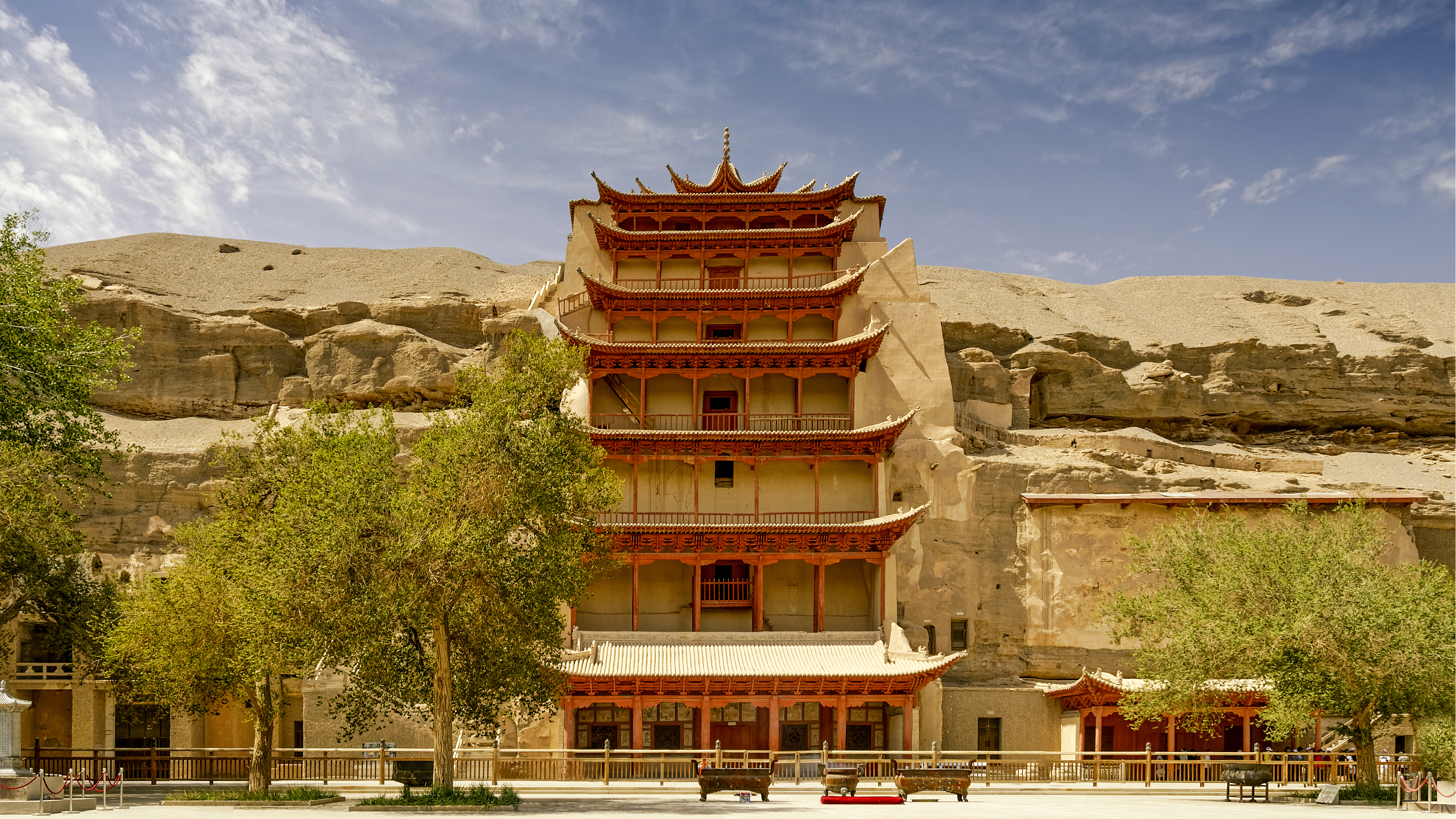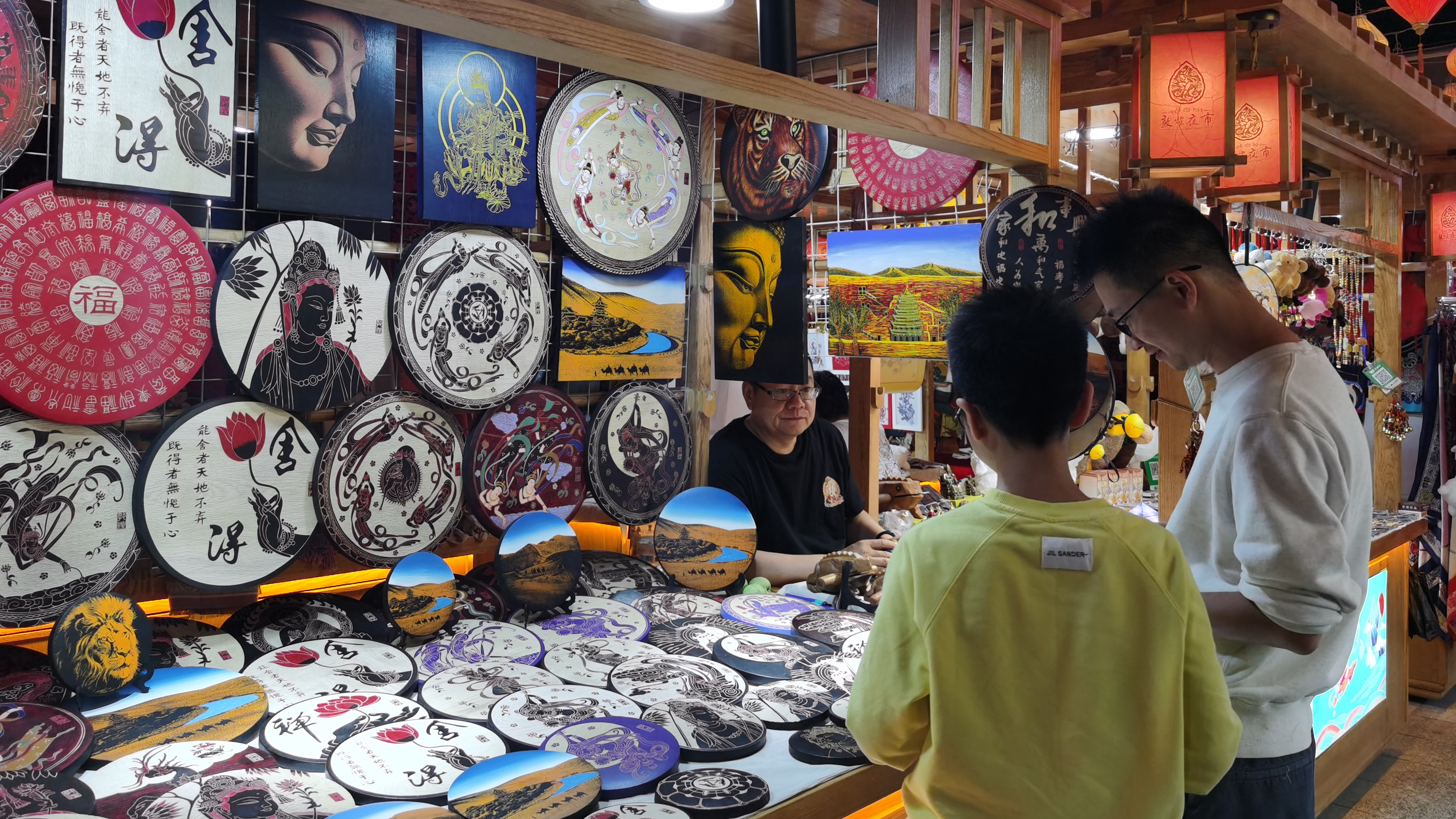
Mogao Caves, Dunhuang, northwest China's Gansu Province. /CFP
Mogao Caves, Dunhuang, northwest China's Gansu Province. /CFP
When Neil Schmid arrived at the Mogao Caves in 1987, he was first amazed by the beautiful desert landscape and then by how cultures mixed so well. Little did he expect that he could one day become a researcher at the place.
Located in Dunhuang, northwest China's Gansu Province, Mogao Caves, also known as Mogao Grottoes, are the home of Buddhist statues and murals dating from the 4th to the 14th centuries, showcasing Chinese history as well as the story of the Silk Road. At that time, the young Schmid was lured by the fascinating stories about Dunhuang that he read in books.
"I became really entranced by the idea of this oasis in the middle of a desert with all this art and all these manuscripts that has the romantic setting but (is) very exotic at the same time," Schmid recalled.
Working as a full-time foreign researcher in the Dunhuang Academy for five years, he now knows that those stories that kindled his interest in Dunhuang were from manuscripts that were discovered in the Library Cave. Also known as Cave 17, about 60,000 ancient documents, in many different languages from along the Silk Road, were discovered in it in 1900. The manuscripts were encyclopedic in nature and spanned almost a millennium.
The Dunhuang Academy was founded in 1944 by the Chinese government to protect the Mogao Caves. Generations of researchers have been attracted by Dunhuang culture, willing to work and live in the harsh conditions of the desert in the past decades.
When he joined the academy in 2018, Schmid expected to be a bridge and resource for international scholars who come to Dunhuang for research. However, he believes the international community has yet to recognize the value of Dunhuang culture.
With over two-thirds of these manuscripts housed outside China, Schmid reckons that international cooperation is crucial in Dunhuang studies.
Speaking of the reason why the world should learn about Dunhuang culture, Fan Jinshi, the honorary president of Dunhuang Academy, said that Dunhuang, a key stop on the ancient Silk Road, was where various cultures met and merged, and the proof of cultural communication and coexistence has been found in the manuscripts in the Library Cave.
"The more cultures exchange, the richer cultures develop. We should continue to push multi-cultural exchanges that happened in Dunhuang before. Harmonious communication is conducive to the development of world culture," said Fan when attending the opening ceremony of the Sixth Silk Road (Dunhuang) International Cultural Expo on Wednesday.

Zhang Kejian communicates with two customers in Shazhou night market, Dunhuang, northwest China's Gansu Province, September 4, 2023. /CGTN
Zhang Kejian communicates with two customers in Shazhou night market, Dunhuang, northwest China's Gansu Province, September 4, 2023. /CGTN
The charm of Mogao Caves is not limited to researchers.
For tourists who want to buy woodcuts as souvenirs of visiting Dunhuang, Zhang Kejian always recommends pieces with the image of Flying Apsaras playing pipa (a pear-shaped stringed instrument) behind their backs, the most famous posture in the art of Mogao Caves.
Flying Apsaras are singing and dancing gods frequently featured in the ancient cave murals in Dunhuang. And few people, if not none, could actually play pipa behind their backs in real life like these graceful gods. The people of Dunhuang are so proud of their creative image that they put a statue of the special god at the center of the city.
The 54-year-old woodcut artist carves woodcuts on site while he sells his works at a stand in the city's largest night market. He only looks up when potential buyers ask about price, story or craft. After straining his neck and shoulders this way for over two decades, he has to retire this year so that he doesn't have to give the craft all up.
"I need to have a break, but I know I can pick it up again anytime I want," smiled Zhang, who taught himself to carve woodcuts because he really likes the murals in Mogao Caves.
Growing up in Dunhuang, Zhang made full use of the period when the caves didn't have many visitors and the ticket price was not expensive. At that time, he would go to the caves whenever he could to observe the murals up close.
If customers show any interest in knowing which god or Buddha on the woodcut it is, Zhang can tell their names, meanings and stories, the cave number they appear in, and even whom they are appropriate to give as gifts.